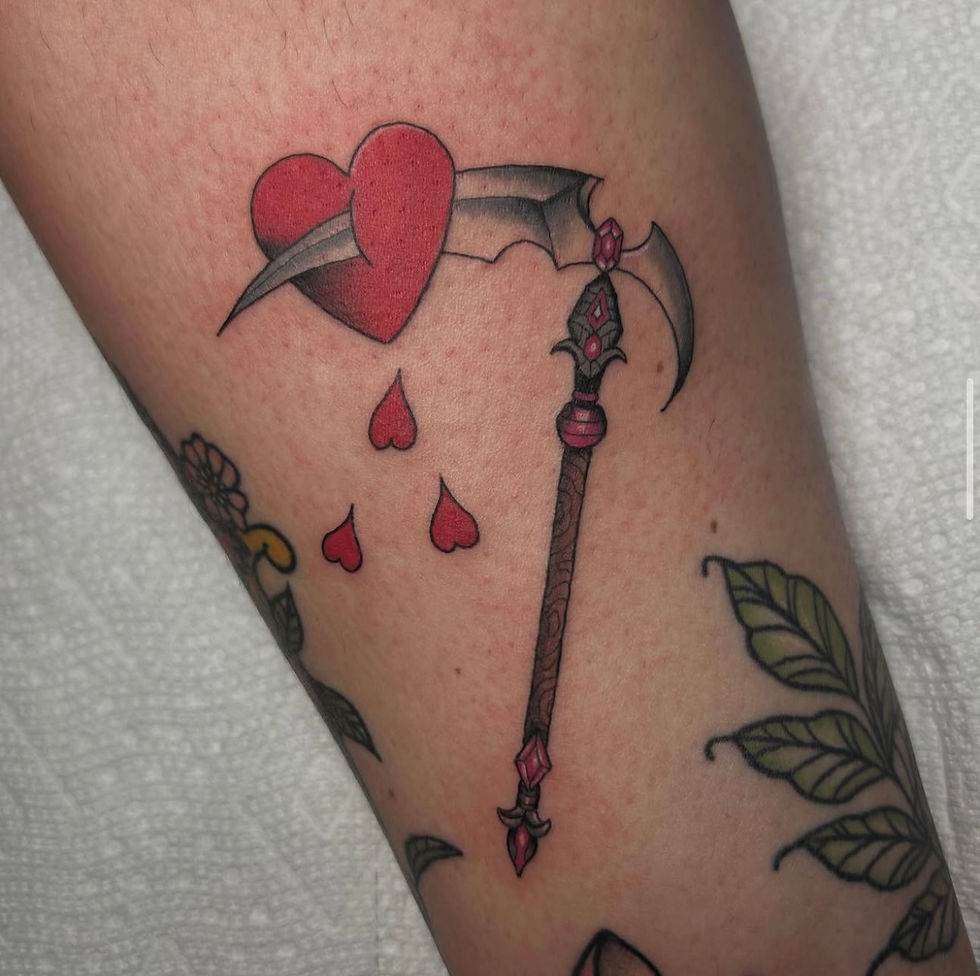Beyond the Ink: The Importance of Consent in Tattooing for a Safe and Inclusive Experience
- Memphis Mori

- May 1
- 3 min read

Tattoos are more than just beautiful designs etched onto our skin—they are deeply personal expressions of identity and individuality. Yet, as the art of tattooing gains popularity across diverse communities, understanding the importance of consent in tattooing becomes crucial for both artists and clients. Creating a safe and inclusive tattoo process involves open client artist communication, where discussing tattoo boundaries and preferences ensures everyone feels respected and empowered. By prioritizing tattoo consent, artists can foster a positive and trusting environment, particularly for LGBTQIA2S+ and BIPOC individuals seeking body art. Join us as we explore how embracing safe tattoo practices can transform the tattooing journey into an empowering experience for all involved.
Understanding Tattoo Consent
Tattoo consent forms the foundation of a positive and ethical tattooing experience. This section explores the multifaceted nature of consent in the tattoo industry, emphasizing its importance beyond mere paperwork and highlighting the role of open communication and safe practices.
More Than a Formality
Tattoo consent is not just about signing a form; it’s a crucial aspect of the tattooing process that ensures both artists and clients are on the same page. Consent in tattooing involves a mutual understanding and agreement between the artist and the client about the tattoo design, placement, and process.
It’s about creating a safe space where clients feel comfortable expressing their desires and concerns. This open dialogue helps prevent misunderstandings and ensures that the final result aligns with the client’s expectations.
Moreover, proper consent practices protect both the artist and the client legally and ethically, fostering a professional and respectful environment in the studio.
Open Client Artist Communication
Effective communication between the client and artist is the cornerstone of a successful tattoo experience. Open dialogue helps establish trust and ensures that both parties are aligned in their vision for the tattoo.
Artists should encourage clients to ask questions and express any concerns they may have. This can include discussions about the design, placement, pain expectations, and aftercare instructions.
Clear communication also allows the artist to provide professional advice and suggestions, helping clients make informed decisions about their tattoos. Remember, a well-informed client is more likely to be satisfied with the final result.
Safe Tattoo Practices for All
Implementing safe tattoo practices is essential for protecting both clients and artists. This includes maintaining a clean and sterile environment, using proper equipment, and following hygiene protocols.
Artists should explain their safety procedures to clients, including the use of single-use needles, sterile equipment, and proper sanitization techniques. This transparency not only ensures client safety but also builds trust and confidence in the artist’s professionalism.
Additionally, safe practices extend to the emotional and psychological well-being of clients. Artists should be sensitive to individual needs and create a comfortable atmosphere, especially for first-time clients or those with specific concerns.
Creating an Inclusive Tattoo Process
An inclusive tattoo process ensures that all individuals, regardless of their background or identity, feel welcome and respected in the tattoo studio. This section delves into the importance of consent, setting boundaries, and empowering clients throughout their tattooing journey.
Importance of Consent in Tattooing
Consent in tattooing is particularly crucial when working with diverse communities, including LGBTQIA2S+ and BIPOC individuals. It’s about creating a safe and respectful environment where everyone feels heard and valued.
Artists should be aware of and sensitive to cultural, religious, or personal considerations that may influence a client’s tattoo choices. This might involve understanding the significance of certain symbols or being mindful of placement preferences.
By prioritizing consent, artists can help create a more inclusive and welcoming tattoo industry that celebrates diversity and individual expression.
Tattoo Boundaries and Preferences

Establishing clear boundaries and respecting client preferences is essential in creating a positive tattoo experience. This involves having open discussions about comfort levels, pain thresholds, and any specific concerns the client may have.
Artists should be prepared to accommodate reasonable requests and be willing to make adjustments to ensure the client’s comfort. This might include taking breaks during the session, adjusting the tattoo placement, or modifying the design.
It’s also important for artists to communicate their own boundaries clearly, ensuring a mutual understanding and respect between both parties.
Empowering Clients in Tattooing
Empowering clients in the tattooing process involves giving them the knowledge and confidence to make informed decisions about their body art. This can be achieved through education, open communication, and respect for their choices.
Artists can empower clients by:
Providing detailed information about the tattooing process
Offering design consultations to ensure the tattoo aligns with the client’s vision
Explaining aftercare instructions thoroughly
Being receptive to feedback and addressing any concerns promptly
By fostering an empowering environment, artists can help clients feel more confident and satisfied with their tattoo experience, leading to positive outcomes for both parties.









Comments